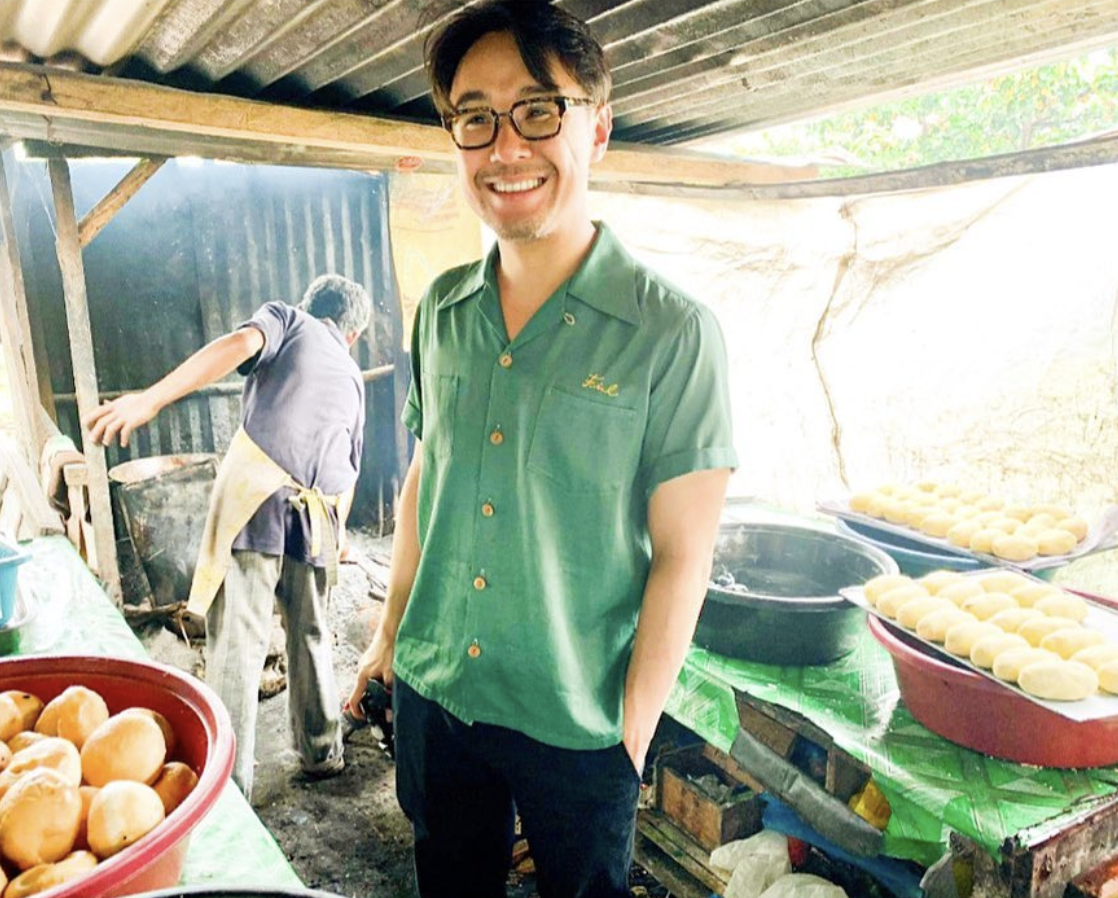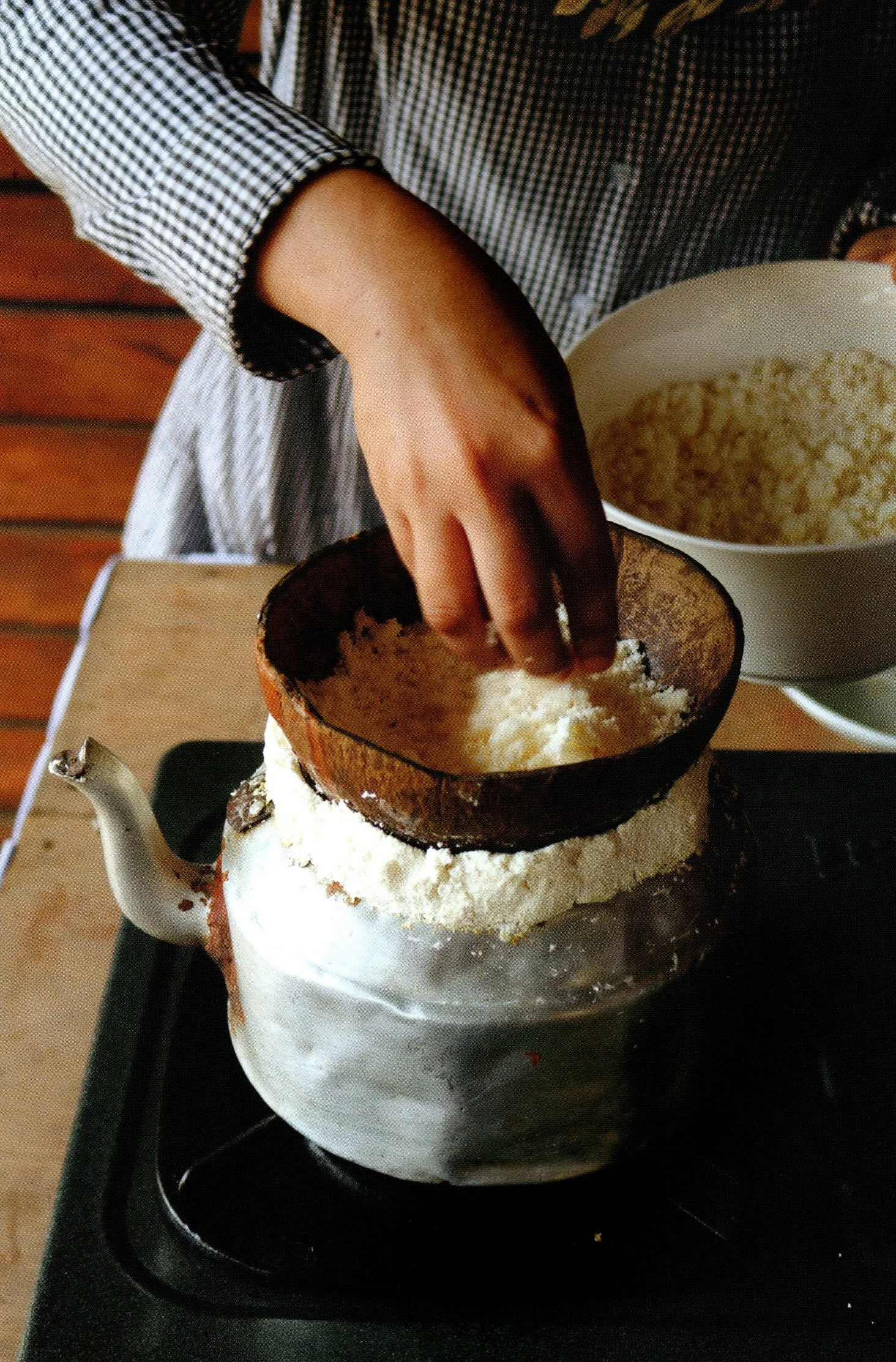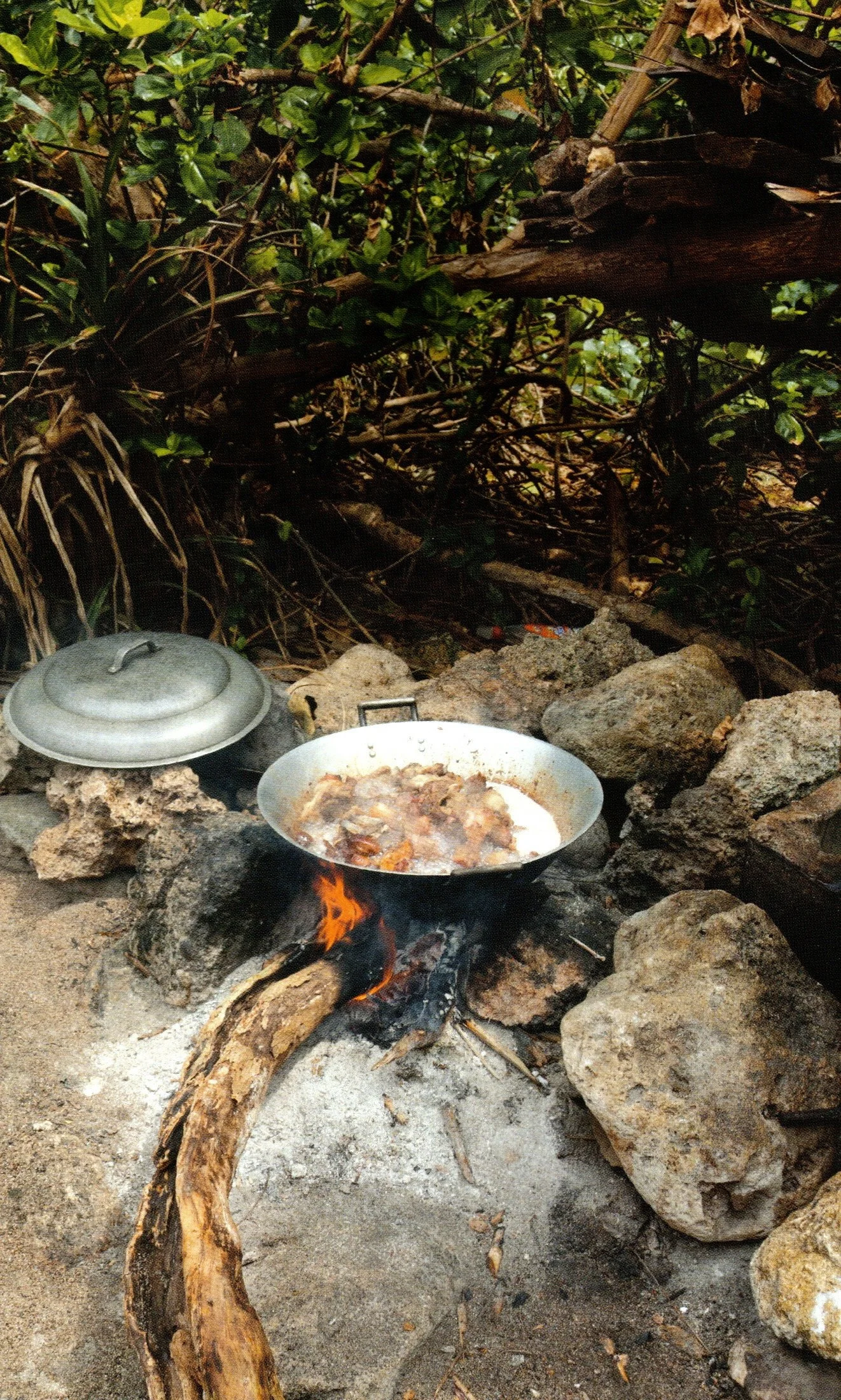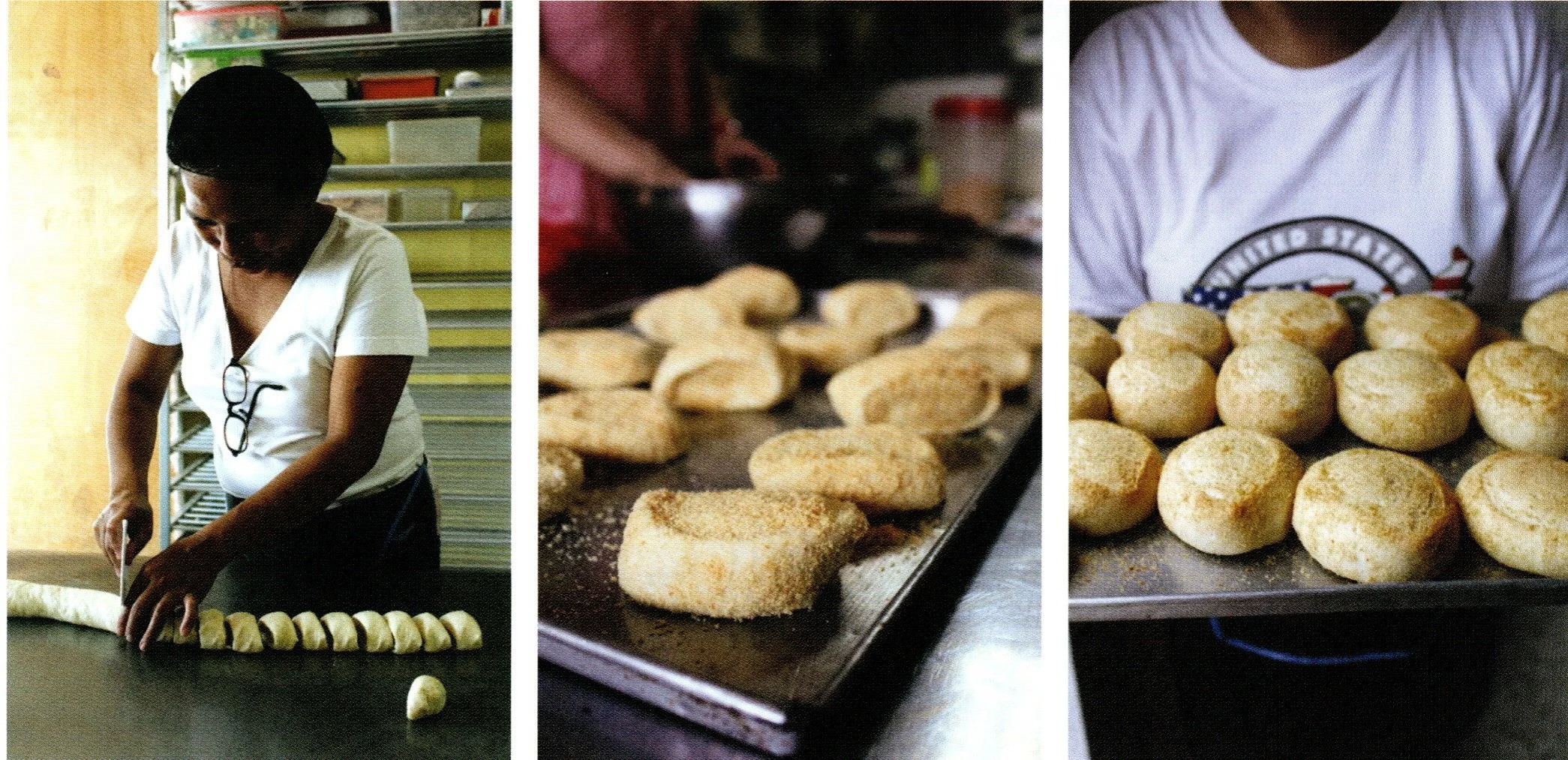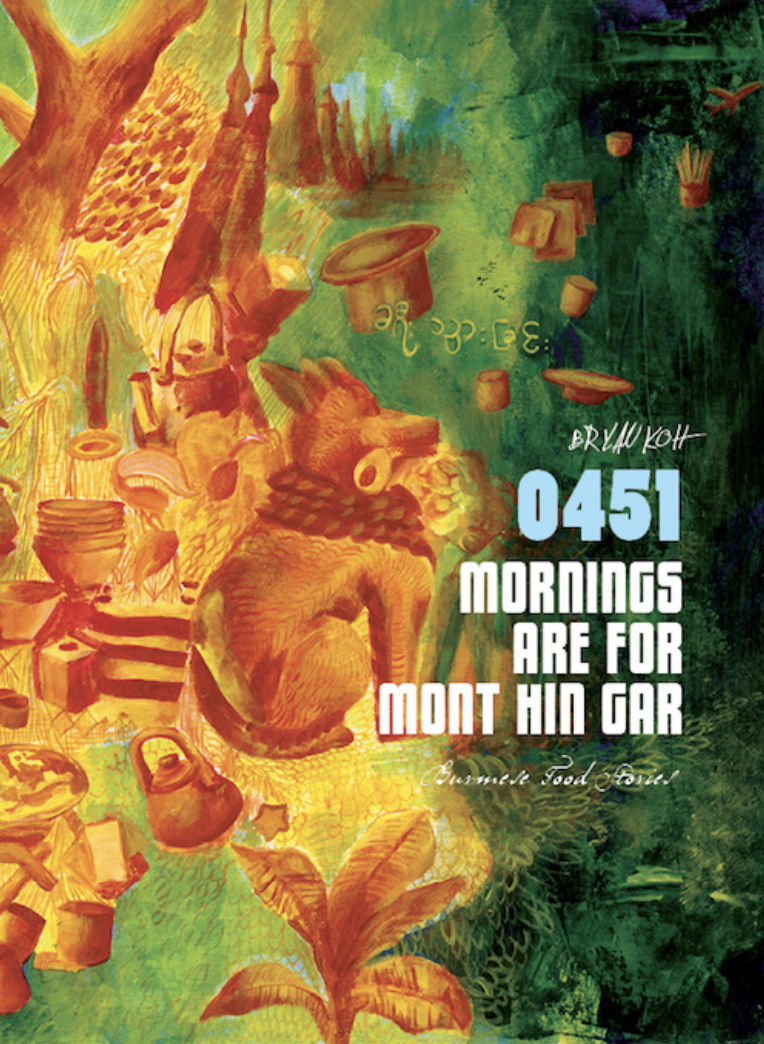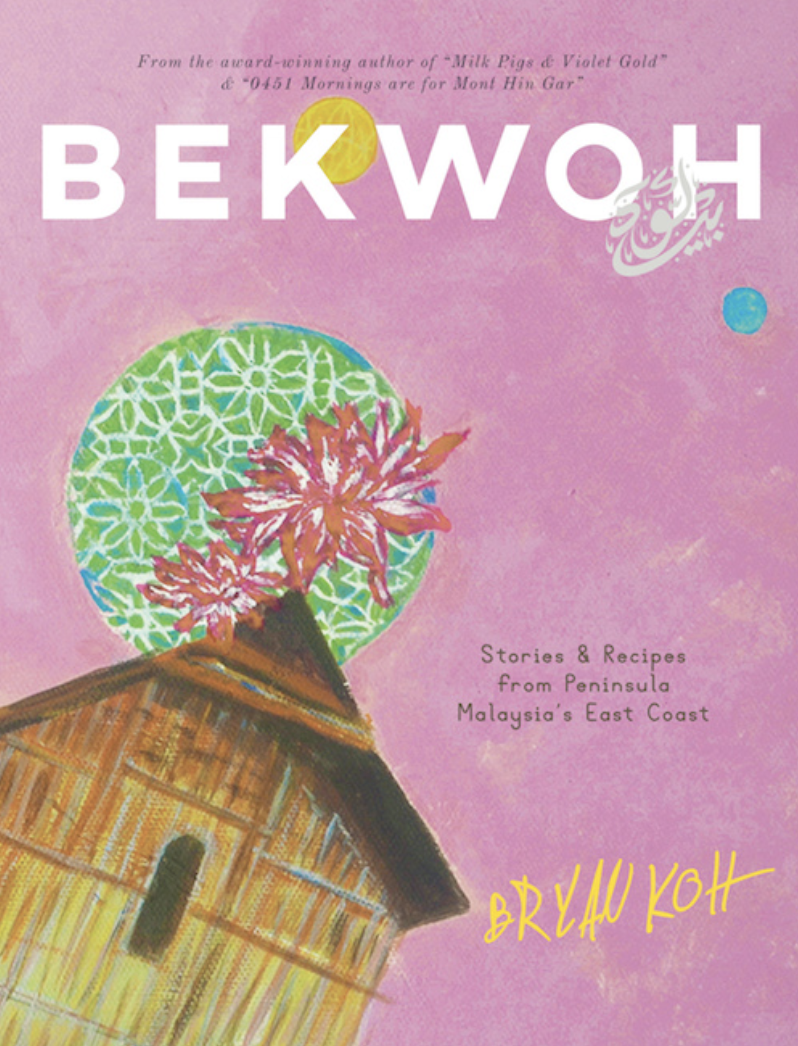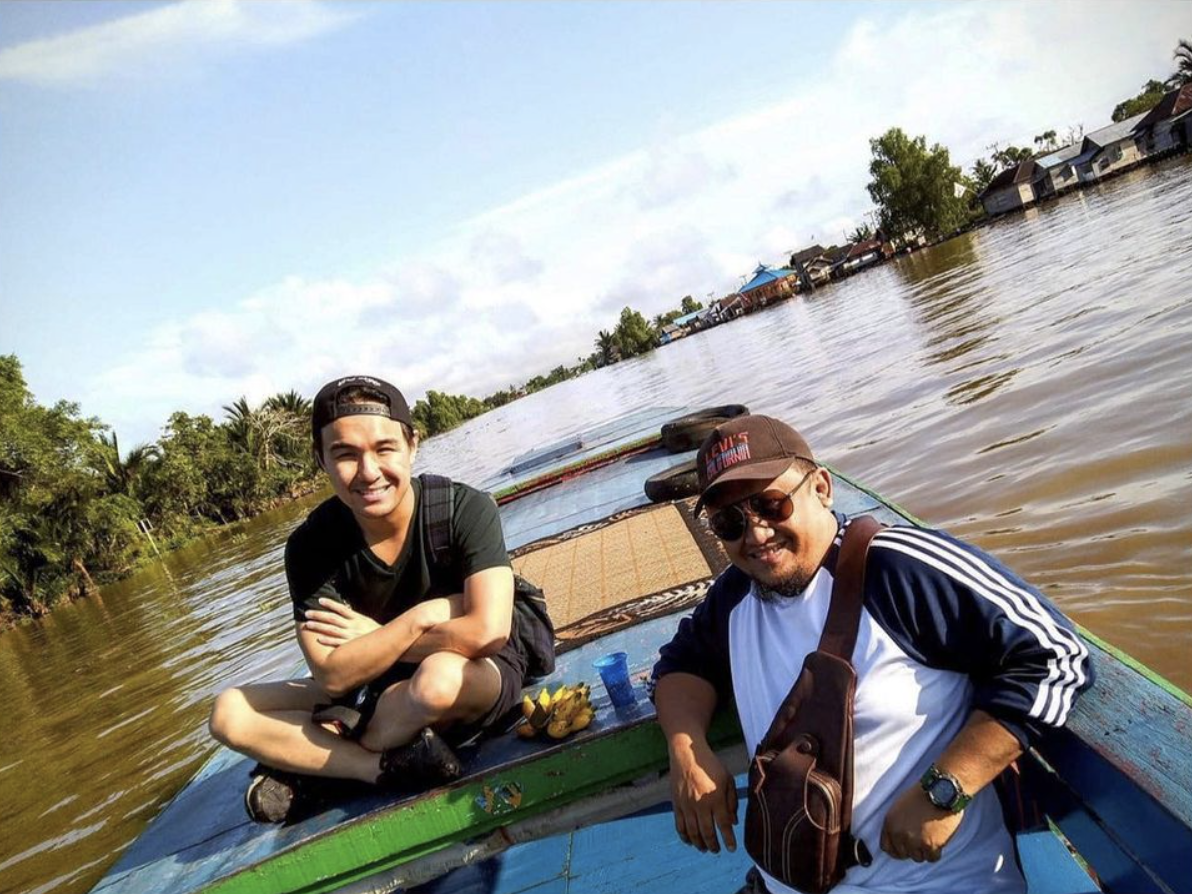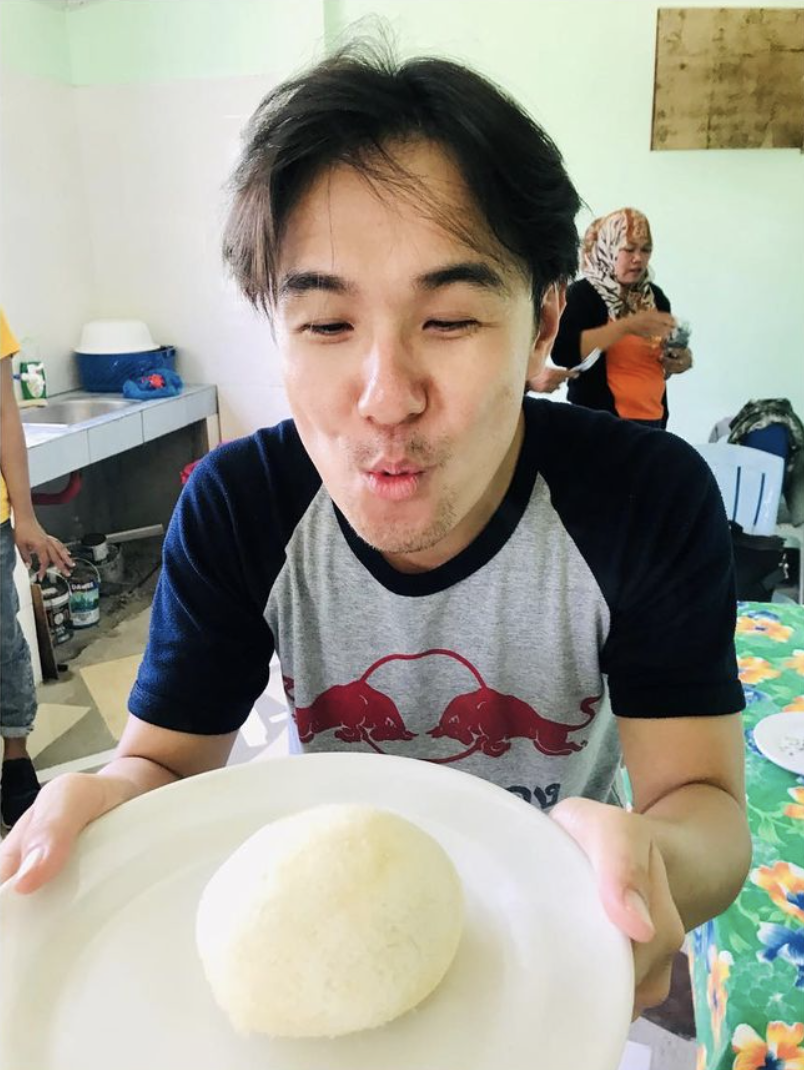Bryan Koh: The Universal Language of Food
Food allows us to open the door and share otherwise lesser known cuisines. It tempts us to taste new flavours and moves us to engage with those with whom we dine.
Cultures and history are expressed through food. Food speaks a universal language that rouses our senses to the environment and prompts an emotional and physical reaction.
Among the many cookbooks on my coffee table, 'Milkier Pigs & Violet Gold' has been my go-to recipe book. It is a food memoir that transports readers into the beautiful culinary life of the Philippines.
Milkier Pigs & Violet Gold was written with such clarity and accuracy that it described the Philippines I was born and raised in -- the cuisine, culture, and people were spot on. You'd think a Filipino wrote it. Think again.
Singaporean Bryan Koh, who is quite the culinary jack-of-all-trades, penned it. This baker-turned-food storyteller extraordinaire is the recipe innovator and co-owner of cake companies Chalk Farm and Milk Moons and an award-winning food author.
The book retells heartwarming stories straight from the kitchen, where the magic of scent, flavours and conversations come alive. It weaves personal anecdotes through memorable homey meals, pulsating with much gusto that can only be pulled off with vivid prose and imageries.
Photos from his trip to Lake Sebu, Mindanao (Phils).
As a Filipino living overseas, I love good Filipino food. I picked up this book because of its mouthwatering recipes and kitchen hacks. After going through its pages, it left me feeling sentimental. I remember my fond moments in the kitchen growing up. I remember my mom and the women in my family teaching me how to cook recipes handed down by my grandmother. It describes preparation and cooking techniques that I, too, have heard of time and again. It is especially a mood-lifter for me, taking me back to my mom's kitchen when I couldn't escape nostalgic thoughts of family and home.
Bryan on Instagram: Learning to make tukambol (know as pakbol to the Maranao people) in a shack outside Cotabato City (Phils). It was a wet afternoon but absolutely baking in that space. This was in 2019. How time flies.
Cooking a vegetable stew in Carcar
Photo of A-nger, red kidney beans stewed with smoked pork belly and blood sausage
In Cotabato
His first book, Milk Pigs & Violet Gold, won the Best Food Book Award at the Philippine National Book Awards in 2014. It also was nominated for Best Travel Food Book at the World Gourmand Cookbook Awards in 2017. (Milkier Pigs & Violet Gold is a new edition.) The book gets its name from two icons: lechon de leche (spit-roasted suckling pigs, or "milk" pig being a cute literal translation), and ube (purple yam) like violet gold of the earth.
Preparing the meat of the coconut
Kinilaw
A graduate of the National University of Singapore majoring in Mathematics and Cornell University holding a Master's Degree in Management Hospitality, it didn't come as a surprise to his family and friends when Bryan decided to enter the culinary world.
From a very young age, Bryan loved experimenting in the kitchen. At eight, he was already baking recipes that tickled his fancy. At seventeen, he was cooking for his family and friends. But one may wonder why, of all the cuisines, write about Filipino food? What got him started with Milk Pigs & Violet Gold?
Photos from his trip to Batanes (Phils)
It all started at home in Singapore. When he was in primary school, he became fascinated with Filipino food. He would find a pot of sinigang (sour and savoury soupy stew) waiting for him after school. His family employed domestic helpers from different parts of the Philippines. They introduced him to the wonders of salted duck eggs and tomato salads, bagoong (salty shrimp paste), chicken adobo (stew spiced with vinegar, soy sauce, pepper and garlic), menudo (a dish with pork belly, liver, carrots, and potato stewed in tomato sauce), tortang talong (char-grilled eggplant omelette), suman (sticky rice dessert) and so much more.
Sinigang
Crispy Pata (deep fried pork hock)
Bibingka (terracotta-baked rice cake)
Bryan would look forward to his helpers returning to Singapore from the Philippines. That's because they would bring him delicious pasalubong (gifts) consisting of ube (purple yam) ice cream and polvoron (crumbly sweets made from milk, butter and sugar) sprinkled with a lot of pinipig (toasted glutinous pounded rice).
On Sundays, the family kitchen would be filled with delicious scents of crispy pata (pork hock), salpicao (garlicy cube beef stew), adobo, ispageti, macaroni salad, pansit canton (noodles). The family helpers would happily prepare this for their church fairs and large birthday parties with friends.
Variations of suman (sticky rice cakes)
Pretty soon, Bryan was eating his crispy pata with toyo (soy sauce) and calamansi, or Mang Tomas liver sauce a la Pinoy (slang for Filipino).
He visited the Philippines in 2009 when he was working as a freelance magazine writer. While he was in Lipa City (south of Manila), his helper's husband enthusiastically introduced Bryan to local food his hometown was famous for. This opened up the possibility of doing a food memoir with food as the lens in understanding the country, its people and culture.
Photos of Bryan in a panaderia in Lipa City (south of Manila)
"Also, Filipino cuisine wasn't as well known then," Brian says. In his book, he says in one of the chapters, “What sets Filipino cuisine apart from its Asian counterparts is its happy incorporation of Western dishes into its repertoire. Bacalao, jamonado, kaldereta, leche flan, mazapan, buñuelos — they are all there, though not having succumbed to minor adjustments to suit the Philippine environment and palate. No other country in Southeast Asia has soaked up the flavours of their colonisers as readily as the Philippines. This is most apparent at the Fiesta table, where a glazed ham and stew of goat and olives with cakes of glutinous rice.
I found myself nodding while reading this passage. Even through its food, the Pinoys are a resilient lot – we make do with what we have, accept and go through life as happily as we can. “Bahala na…” (a typical Filipino attitude of optimistic acceptance in an uncertain or difficult situation).
Photos of Bryan in a pansiteria in Tuguegarao (north of Manila).
Sadly, he was one of the very few among his peers that enjoyed the taste of Filipino food. Many complained that it was excessively fatty and salty. Some even said it was unhealthy because of the processed food like corned beef, Vienna sausage, and sardines, which are staples in local household cupboards. They're probably the only country that used sliced hotdogs and sugar in their spaghetti sauce.
Another complaint about Filipino food is it was singularly sour. To this, Bryan replied, "It is true that many dishes have tartness sung through them, but this is done in different pitches and colours. The previously mentioned tamarind-based sinigang is a fine example. It can be made using different fruits, from calamansi limes, green mangoes, small pink-fleshed guavas to santols (cotton fruit). All of them bring their own brand of acidity, providing different perfumes and textures in the process, giving each broth a unique personality." He couldn't have said it better.
With a cocktail of enthusiasm and curiosity, Brian dove into Filipino food. He navigated his way around the different islands of the archipelago visiting places that even I had never been to. He went from one region to another, trying all the beautiful dishes each province had to offer. He described each from his experience – the ingredients, the taste and scent, the traditional cooking methods and implements – as vividly as possible.
"There are many fine things to eat in the Philippines. One simply has to know where to look," he adds.
His local Pinoy friends helped pave the way for his food journey in the country. Through them, he enjoyed cooking sessions with the local cooks, visits to wet markets, delicious simple and special meals in restaurants, carinderias (hawker stalls), cafes, and panaderias (bakeries).
"I was taken to a cosy establishment, tucked away in a quiet neighbourhood in Quezon City, where I tasted, for the first time, bibingka (terracotta-baked rice cake). This is a cake made from eggs, sugar, rice flour," he remembers with fondness.
Bryan illuminates and uplifts the beautiful culinary life of the Philippines. He is also living proof that you don't have to be a Filipino to cook – and eat – good Filipino food.
I experienced his cooking in a dining event when he served a nine-course menu featuring his take on Philippine speciality dishes. The meal was delicious and memorable. Suffice to say, his laing (spicy shredded or whole taro leaves with meat or seafood cooked in thick coconut milk and spices)… tamales (cornmeal dough around a filling of minced meat and red peppers, then wrapped in corn husks or plantain leaves before baking or steaming)… and escabeche (marinated fish with pickled vegetables and spices) were one of the best I've ever had. His hot pandesal (bread roll) is the pandesal I grew up with, and it's no shock. He is the best baker in Singapore.
Bryan whipped up a nine-course Filipino meal in a private dining event. A photo of laing.
Delicious sisig with a special ingredient only people who read his book would know.
Conch & clam salad with green mango, lato seaweed, and toasted coconut.
Bryan’s appetite in unearthing other regional cuisines is insatiable. He is interested in studying Asian cuisines. His second book, ‘0451 Mornings are for Mont Hin Gar: Burmese Food Stories', won third place in the Best Asian Cookbook category at the World Gourmand Cookbook Awards in 2016.
His third book 'Bekwoh, Stories & Recipes from Peninsula Malaysia's East Coast' was released in Southeast Asia in September 2018 and the UK and the US in March and May of 2019, respectively.
He is currently working on two new books, which is about the Peranakan food of Southeast Asia and the food he grew up with, a mix of different flavours given his diverse palate.
Milkier Pigs & Violet Gold: Philippine Food Stories, Second Release (Enriched)
0451 Mornings are for Mont Hin Gar: Burmese Food Stories
Bekwoh, Stories & Recipes from Peninsula Malaysia's East Coast
“I wouldn’t be doing what I am doing had it not been for my mother. My mom pushed me to try new things. She’d always tell me not to box myself but to explore and experience everything around me. When we were younger, she would take my sister, Dawn, and I, to try a new cuisine and explore the unknown. She opened the doors for me, encouraged and supported me all the way.”
Brian’s mother is Ginny Ng, a respected name in Singapore’s retail industry.
Bryan’s published books has led to invitations to talk at conventions. A memorable one for Brian was at the Asian Food Exchange in Manila in 2018, where he discussed foreign attitudes to Filipino food and eating culture.
He has also conducted three separate dining events in Singapore, which featured Filipino food, Burmese cuisine, and dishes from Peninsular Malaysia's East Coast. He will be doing his fourth one on December 29 highlighting the Borneo table.
Bryan with mom Ginny
Brian loves interacting with his readers and happily converses with like-minded individuals, people who are curious and intrigued by food that is not well represented globally and are less known.
Bryan on Instagram: Learning to fold glossy Phrynium blades over cargoes of rice - taken to the point of margin-blurring softness. This was in Marais, over half an hour from Tenom, in Sabah, where I had the privilege of spending time of the local Murut community.
Bryan on Instagram: Me and my dear friend @atallahaisyi_yudha en route to Banjarmasin’s famous floating market, February 2019
Bryan on Instagram: My time in Muslim Mindanao was not long, but I will never forget it, from the sumptuous linigil to the 8pm curfews. Thank you to my dear friend @clanggarcia for making it all happen so effortlessly, and for making sure I got home safe XX
Bryan on Instagram: Me and a pyuto, stuffed with braised octopus
Bryan on Instagram: In the kedai, shooting bangbang sug, silently praying the bench won’t give away. Tawi-tawi, 2020"
You can find him in the kitchen of Chalk Farm creating new recipes or private events, whipping up delicious dishes that are close to his heart, or at home with his hands on a keyword, or experimenting in his family kitchen.
As advocates of Asian cuisine, we can't wait to see what he has in store for us in 2022. I certainly look forward to Bryan's heartwarming food stories culled from his travels in the region.
Tisha | ws





